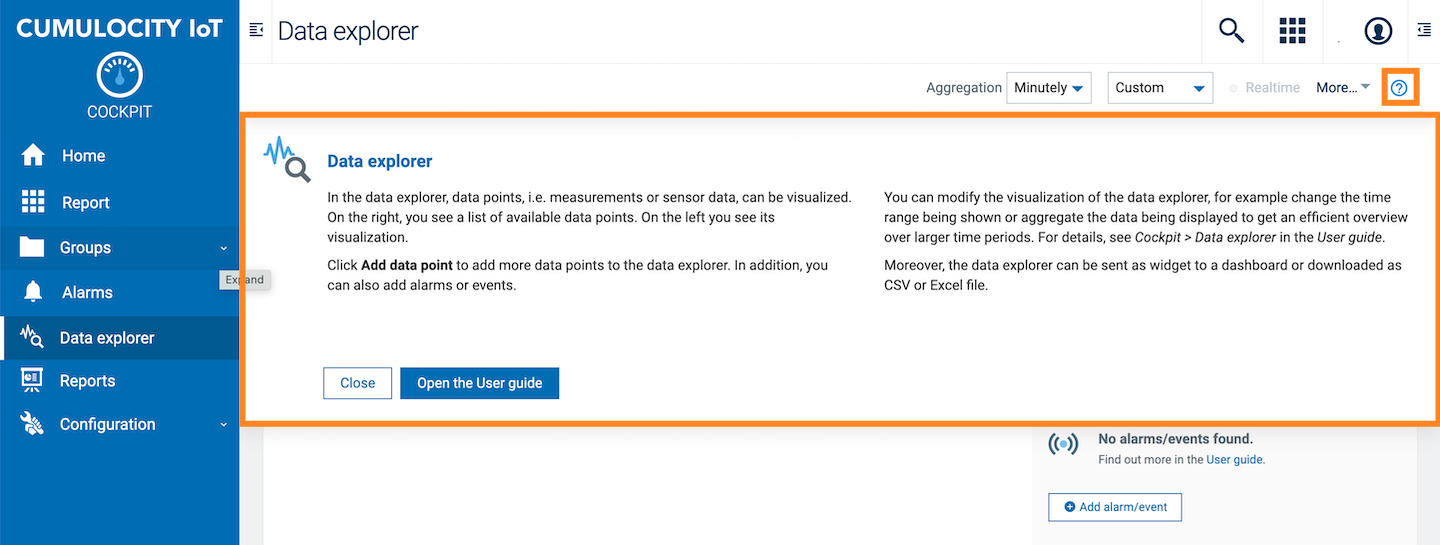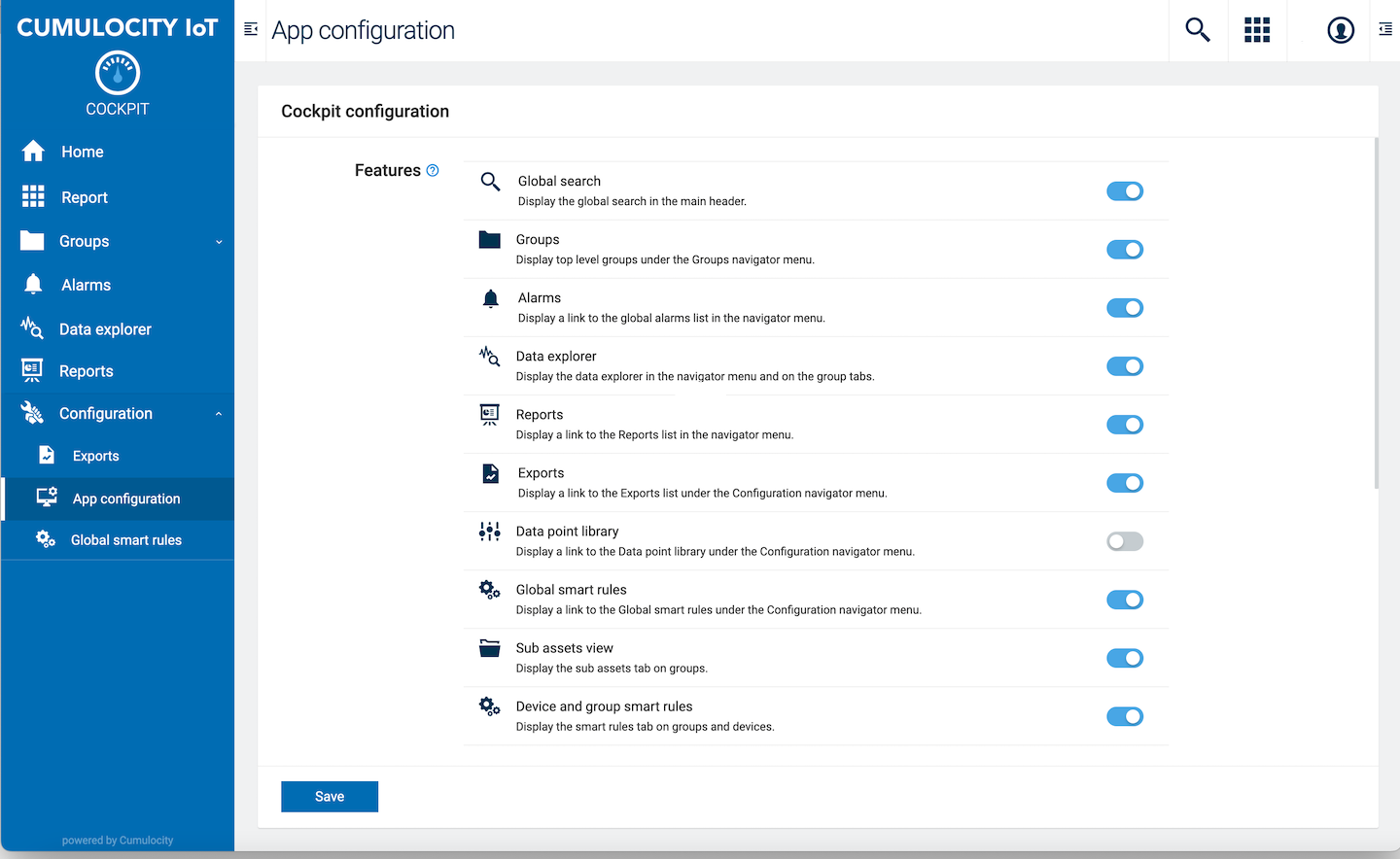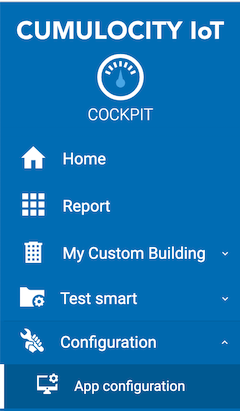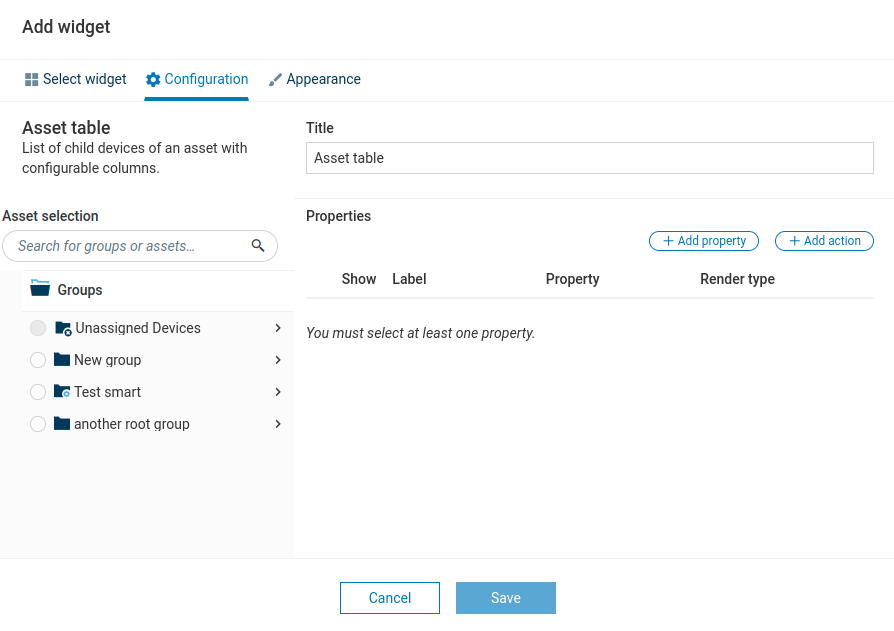What´s new
Release 10.14.0 includes the following new features or major feature enhancements.
Contextual help
To facilitate the understanding of a page’s content and function for first time users of the Cumulocity IoT platform, introductory texts have been added to almost every UI page that explain the purpose of the page.
This contextual information can be accessed via a help icon/button in the action bar. Clicking it opens a drawer with a short introduction on the page’s functionality and a direct link to the specific section in the User guide.

Custom Cockpit configuration
Cumulocity IoT now offers you to configure custom Cockpit applications according to your individual needs. If you have the relevant permissions you can clone the default Cockpit application and customize certain settings. Among others, you can determine which of the available features like, for example, alarms, data explorer, and so on, should be displayed in the navigator.

You can also specify, which groups or subgroups should be displayed as top level nodes in the navigator. This way, you can configure your own Cockpit application which might look completely different than the default one:

For details, see Cockpit > Configuring Cockpit applications in the User guide.
New asset selector
Widgets now support the new device and asset selector. The new selector allows navigating quickly through all groups and devices applicable for the currently selected widget. Note that this functionality is not available for widgets which are related to datapoints.

Additionally, devices and assets can be searched globally (for reports or home dashboards). If a group contains many items, the current level can be filtered.
For details, see Cockpit > Using widgets in dashboards and reports in the User guide.
Advanced Software Management
Software
The new Advanced Software Management feature provides better scaling and extends the software model with the softwareType property. This functionality requires a subscription to the advanced-software-mgmt microservice.
For example, the following static SmartREST template creates 3 software objects and appends them to the device:
140,nvm,0.39.1,apt,https://github.com/nvm-sh/nvm,containerd.io,1.6.0,apt,https://containerd.io/,nginx,1.21.6,container-image,https://hub.docker.com/_/nginx
This results in the creation of the following software artefacts:

In order to migrate to the new software model devices must remove their c8y_SoftwareList fragment and re-set their software artefacts using the SmartREST template above.
The Software repository and the Software device tab in the Device Management application have been enhanced to allow for better user interaction with long software lists and typed software. For details, see Device Management > Managing device data > Managing device software in the User guide.
Services
Devices can now announce their services. Services are modeled as child addition managed objects of type c8y_Service. To create/update services the following static SmartREST template can be used:
102,dockerd-systemd-service,systemd,dockerd,up
This results in the following service being created:

A new Services device tab displaying an overview of the services announced by the device has been added to the Device Management application. For details, see Device Management > Device details > Services in the User guide.